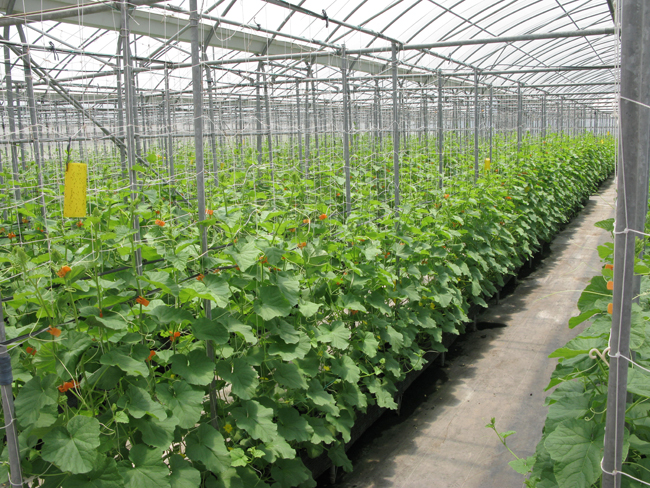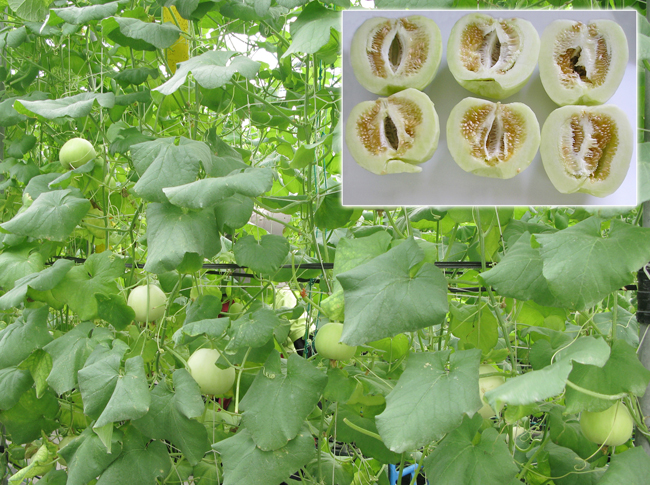Innovative techniques
Melon (Cucumis melo) is commonly cultivated in open fields as creeping vines in central and southern Taiwan between the production of the first and second rice crop. Nevertheless, melons grown in open fields are susceptible to thriving melon flies and fruit flies that damage young and mature melon fruits, and monsoon rains that lead to an increase in various serious diseases. Moreover, improper nutrient and water management under variable weather pattern could cause fruit splitting, reduce yields, quality, and the commercial value of the produces. All these problems have caused the melon industry to decline. In recent years, a number of advanced farmers have tried to produce melon under simple protected structure and on vertical trellis with soil or culture media. With the said structure, the damages of melon flies and fruit flies and rain-conducive diseases can be avoided. However, simple protected structure is usually prone to poor ventilation and heat accumulation. To address these problems, TARI has developed a new cultivation model under protected structure for safe, high-quality melon. This sophisticated model incorporates the hydroponic management of nutrients and water, vertical plant growth (pruning and trellising), and chemical and biological controls. Melons produced under this model have achieved the desired effects in terms of pest and disease control and stable fruit yield and quality. There are no obvious pest and disease occurrences, and the fruit flesh is thick and fine with sugar content at 14-17°Brix.



